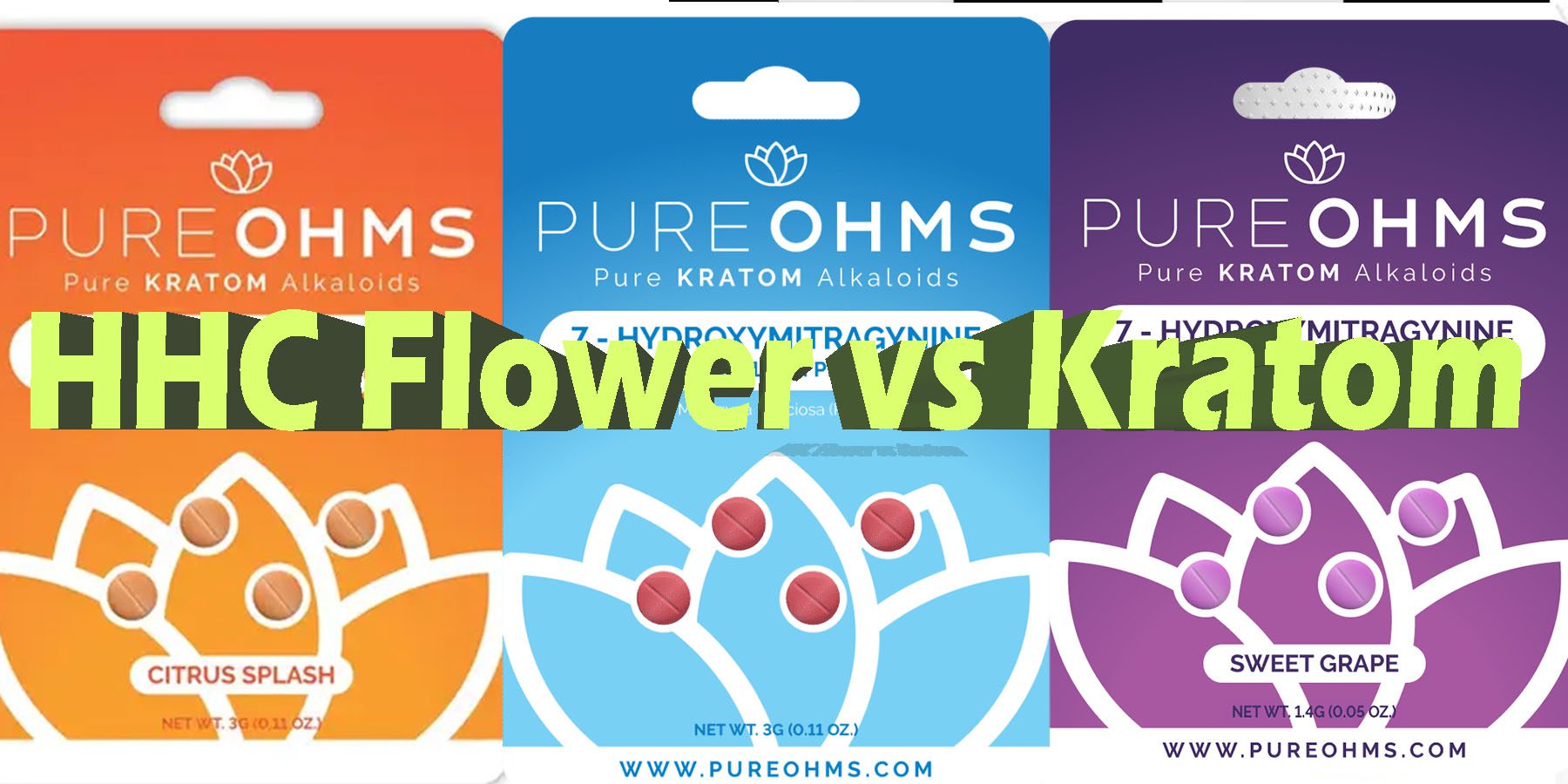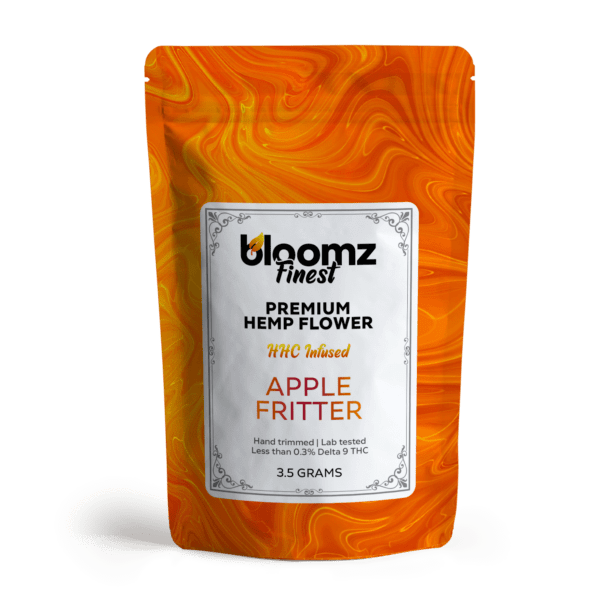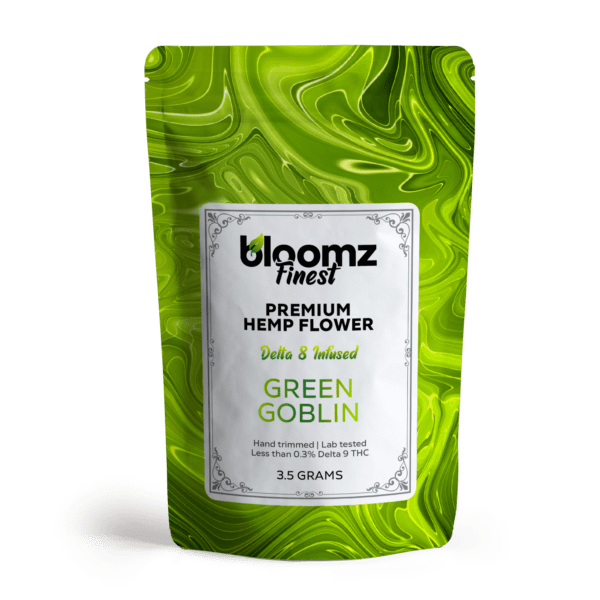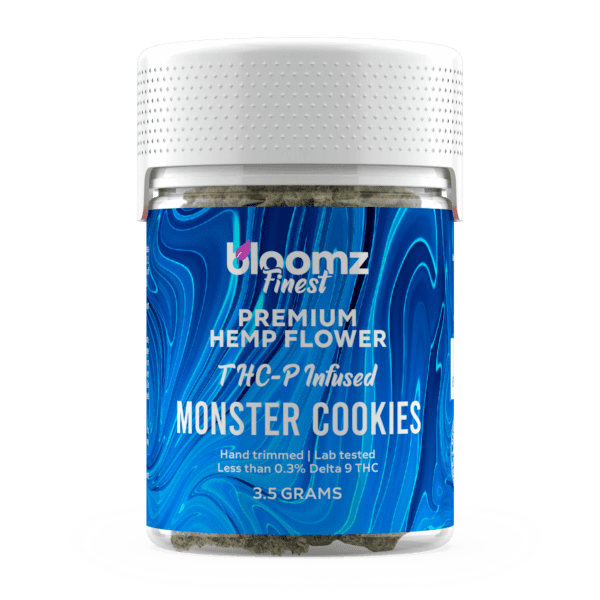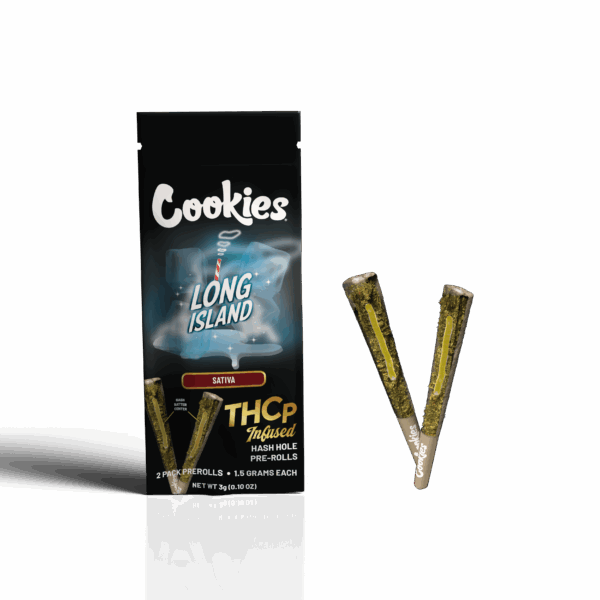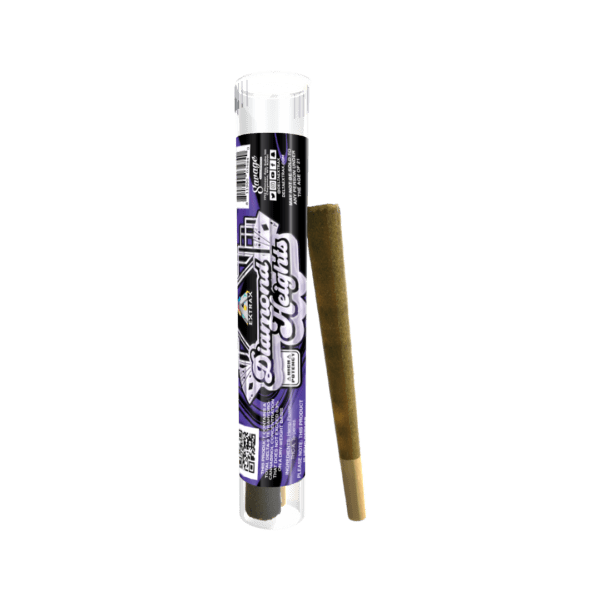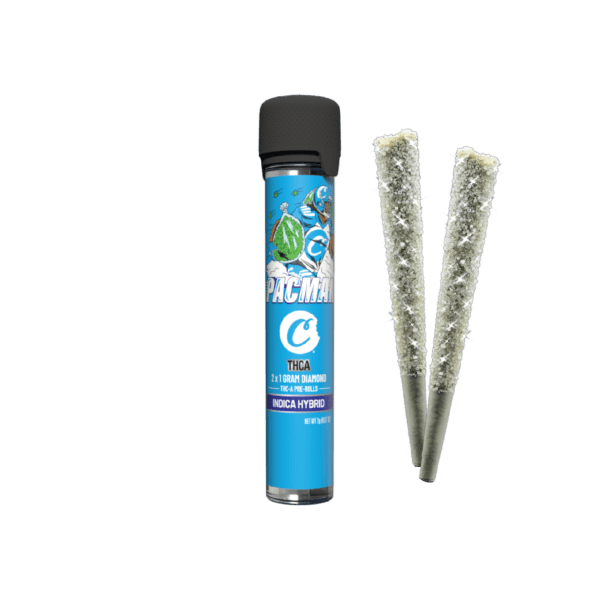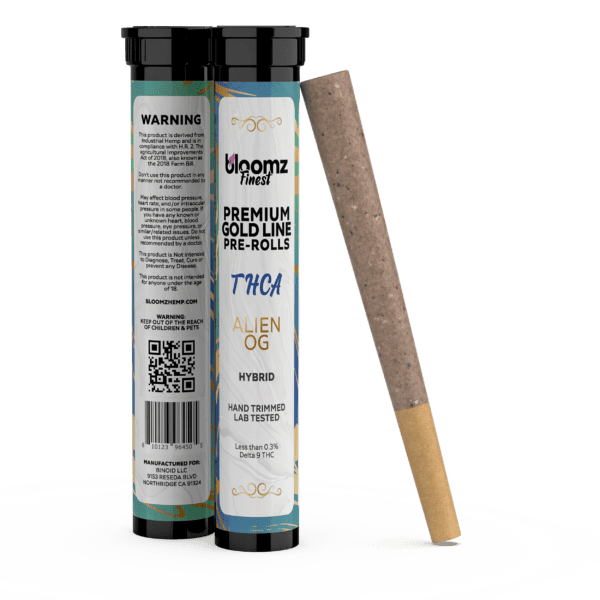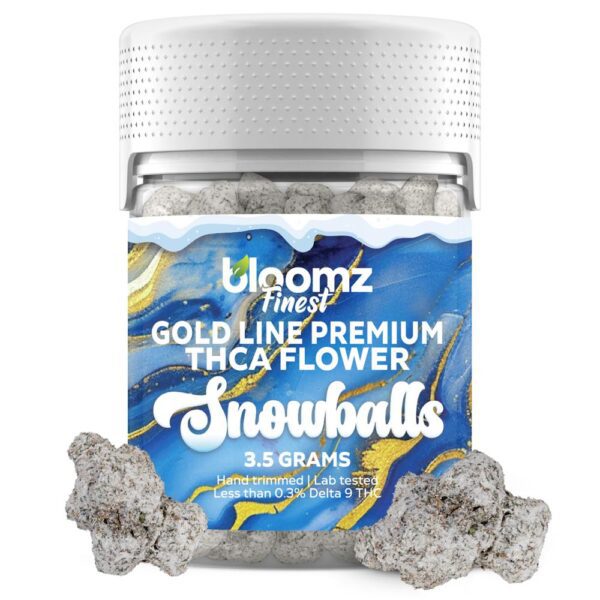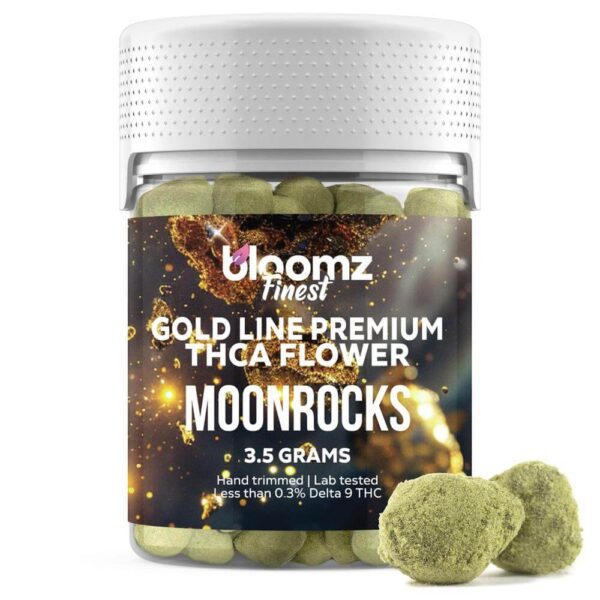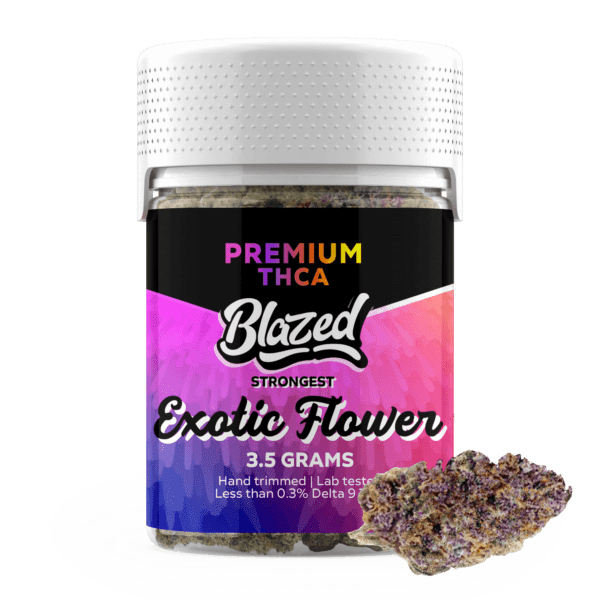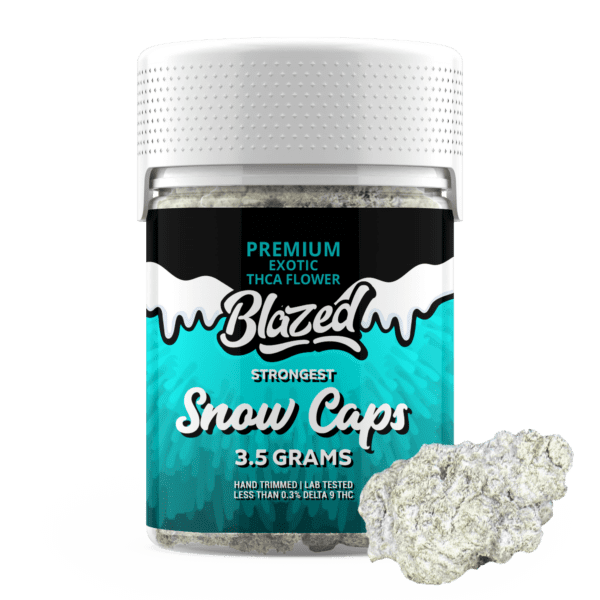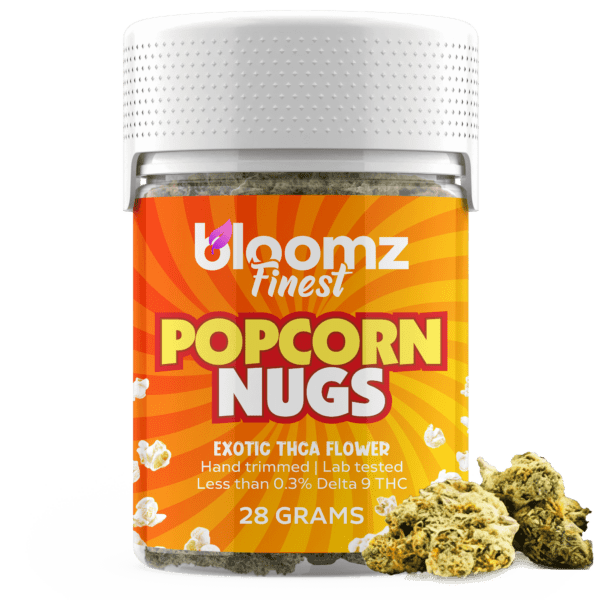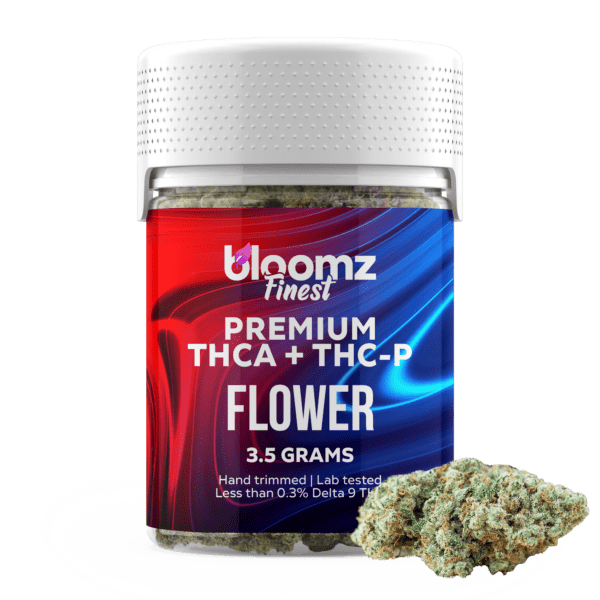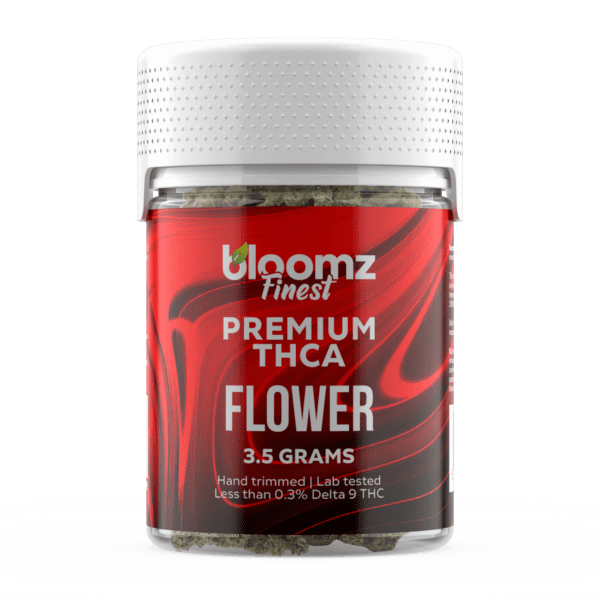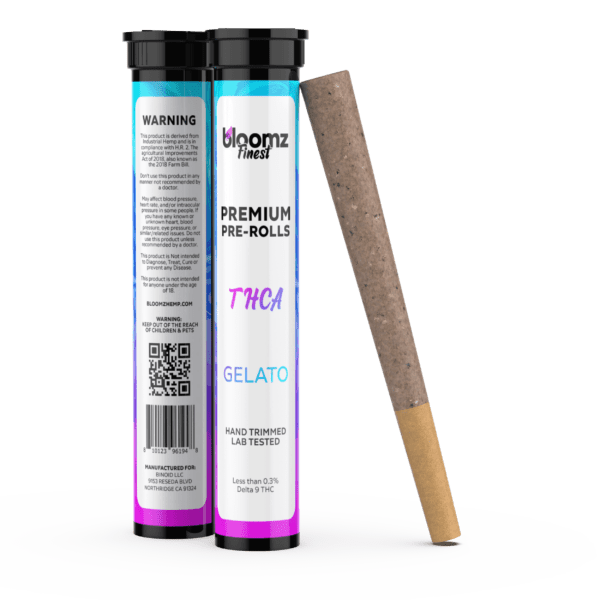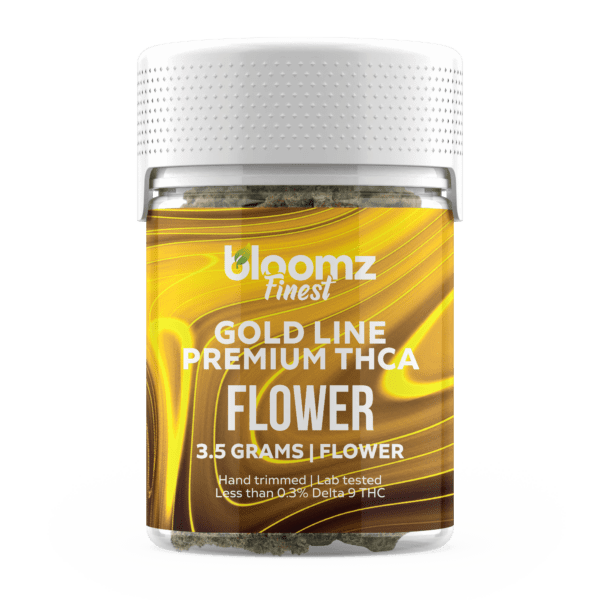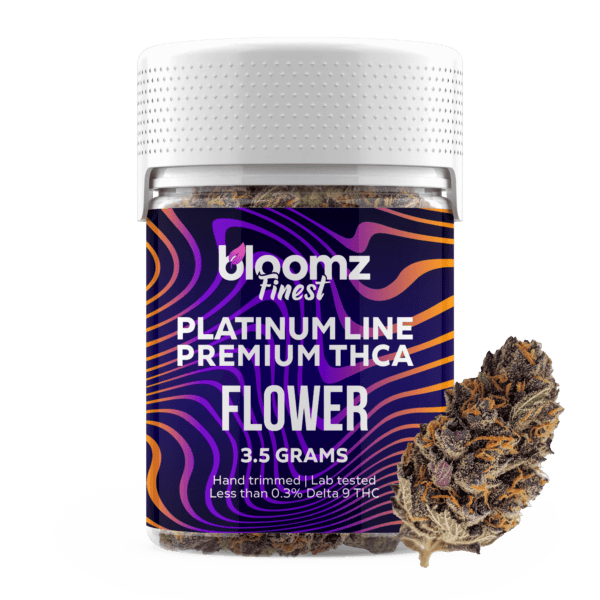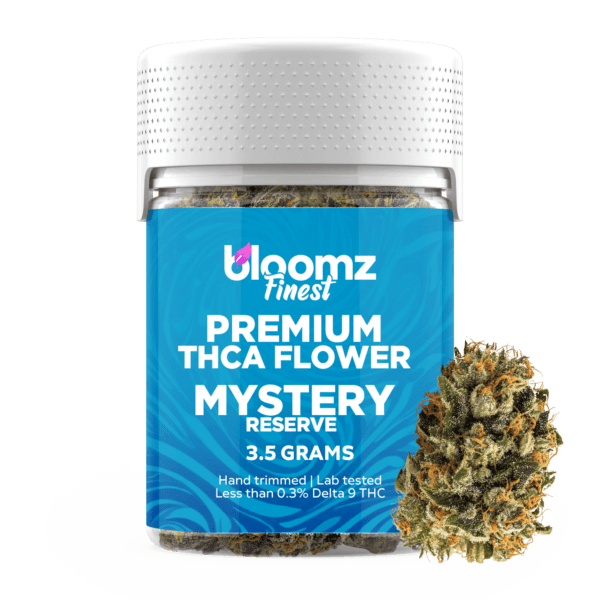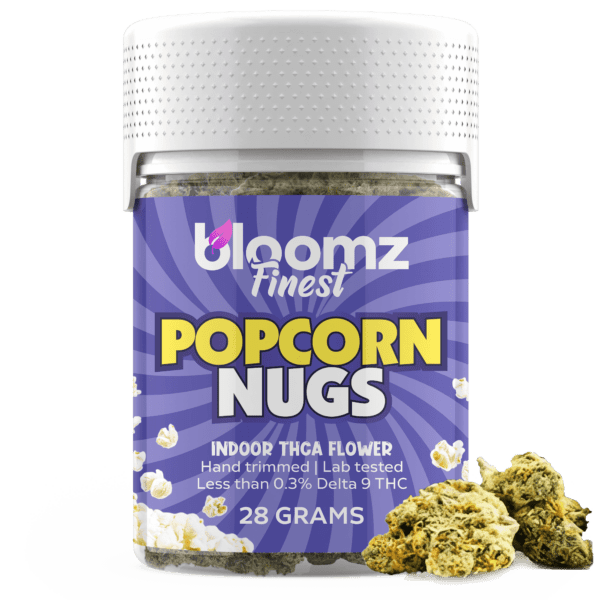In the vast and dynamic world of botanicals and hemp-derived products, consumers are constantly presented with novel options, each with a unique story and a distinct profile of effects. Two powerful contenders have captured the public imagination, one a testament to modern chemical ingenuity and the other a pillar of ancient herbal tradition. In one corner, we have HHC flower, a product born from a scientific process called hydrogenation, celebrated for its remarkable stability and smooth, balanced psychoactive experience. It represents the ongoing human effort to refine and enhance the gifts of nature.
In the other corner stands Kratom, a raw, natural leaf from the tropical forests of Southeast Asia, revered for millennia for its incredible versatility and dose-dependent effects. This is a fascinating matchup between a lab-perfected cannabinoid and a time-honored ethnobotanical, a choice between a consistent, engineered journey and a multifaceted, natural one.
To Buy HHC Flower Click Here
Recommended products
Why It’s Important to Breakdown the Matchup of HHC Flower vs. Kratom
Navigating the ever-expanding landscape of relaxing and euphoric substances requires a clear map, and a detailed breakdown of HHC flower versus Kratom is essential for any modern consumer. While both are sought after for their ability to alter mood and promote a sense of well-being, they arrive at their destinations via entirely different vehicles. Their origins, chemical compositions, legal standings, and the very nature of the experiences they offer are worlds apart. A thorough comparison is not just a matter of curiosity; it is a critical tool for making a responsible, informed decision that aligns with one’s personal preferences, lifestyle, and local laws, ensuring the chosen path is both safe and satisfying.
A comprehensive analysis is crucial because it shines a light on the fundamental differences that every potential user should understand before exploring either of these options.
Chemical Origin and Nature: “HHC flower” is a manufactured product where hemp flower is infused with Hexahydrocannabinol, a cannabinoid created by chemically adding hydrogen to a THC molecule. This semi-synthetic origin stands in stark contrast to Kratom, which is the simple, ground leaf of the Mitragyna speciosa tree, with its effects coming from a natural suite of alkaloids. This is a primary distinction between a product of chemical engineering and a product of raw agriculture.
The Question of Stability: A unique characteristic of HHC is its chemical stability. The hydrogenation process removes a double bond from its molecular structure, making it highly resistant to degradation from heat and UV light, which theoretically gives it a much longer shelf life than other cannabinoids. Kratom powder is also stable when stored properly, but the unique chemical resilience of HHC is a key talking point in the cannabinoid community.
Defining the User Experience: The subjective effects are a major point of divergence. HHC is reported to provide a clear-headed, relaxing, and euphoric high, often described as being slightly more potent than Delta 8 but gentler than Delta 9 THC. Kratom’s effects are famously biphasic—stimulating and energizing at low doses while becoming deeply sedating and calming at higher doses. The choice is between a consistent, balanced high and a versatile, dose-dependent spectrum of effects.
Navigating Different Legal Puzzles: Both HHC and Kratom occupy complex and often confusing legal spaces. HHC’s legality is debated under the 2018 Farm Bill, the Federal Analogue Act, and a patchwork of state-level bans. Kratom is federally legal but unregulated, and it faces its own list of state and local prohibitions. Understanding their distinct and separate legal challenges is vital for any consumer.
Contender #1: HHC Flower
Stepping into the spotlight is our first contender, HHC flower, an intriguing and increasingly popular player in the vast arena of hemp-derived cannabinoids. HHC, or Hexahydrocannabinol, has carved out a unique niche for itself, attracting users who are looking for a balanced and smooth psychoactive experience that lands somewhere between the gentleness of Delta 8 and the intensity of traditional Delta 9 THC. What truly sets HHC apart, however, is its chemical backstory. It is a product of hydrogenation, a scientific process that enhances its stability, making it a robust and resilient cannabinoid. HHC flower is a prime example of modern innovation meeting consumer demand, offering a reliable and pleasant journey into a state of blissful relaxation for those willing to explore beyond the more common cannabinoids.
Hexahydrocannabinol (HHC) is a semi-synthetic cannabinoid that is created through a process called hydrogenation. To understand this, it’s helpful to start with its natural counterpart, THC. HHC is essentially a hydrogenated form of THC. The process is chemically analogous to how liquid vegetable oil is converted into solid or semi-solid margarine. In a laboratory setting, a THC molecule has its double bond in the top ring structure broken and saturated with hydrogen atoms, typically in the presence of a metal catalyst like palladium or nickel. This seemingly simple addition of hydrogen makes the molecule significantly more stable. It becomes less susceptible to oxidation and degradation from exposure to heat, air, and UV light, which is why HHC products are known for having a much longer and more stable shelf life than products made with THC.
This chemical robustness is one of its primary advantages. It’s also important to note that the manufacturing process creates a mixture of two different HHC molecules: 9R HHC, which actively binds to the body’s endocannabinoid receptors, and 9S HHC, which, due to a slight difference in its molecular structure, does not bind as effectively and is considered largely inactive. The ratio of these two isomers in the final product directly impacts its overall potency.
With this crucial scientific context, it becomes clear that “HHC flower” isn’t a strain of cannabis that a farmer can cultivate to be naturally rich in HHC but instead, it’s a manufactured, composite, and infused product. The process begins with high-quality, legally grown hemp flower, which is naturally rich in CBD (cannabidiol) and contains less than 0.3% Delta 9 THC. This beautiful, terpene-rich flower provides the physical structure, the aromatic compounds that create the flavor and smell, and a host of other minor cannabinoids. This foundational hemp flower then serves as the base which is meticulously infused or coated with a pure HHC distillate, the potent, honey-like oil created through the hydrogenation process.
This infusion process is what elevates the simple, non-intoxicating hemp flower into a potent, psychoactive product, delivering the unique and sought-after effects of HHC in a familiar, smokeable format. The quality and safety of the final product are therefore entirely dependent on two separate but equally important factors: the premium quality of the initial hemp flower and the verified purity of the HHC distillate with which it is infused.
Recommended products
The creation of a high-quality and effective HHC flower is a multi-stage process that requires a perfect marriage of expert agricultural practices and precise, high-level laboratory techniques. Each and every step in this complex chain of production is critically important to producing a final product that is safe, potent, consistent, and enjoyable for the end consumer:
Hemp Flower Cultivation: The process starts on the farm with the cultivation of high-quality, legally compliant hemp. These plants are grown to be rich in CBD or CBG and to have a low Delta 9 THC content (below 0.3%). The flower is then carefully harvested, professionally trimmed, and slow-cured to optimize its natural aroma, flavor, and appearance.
Cannabinoid Extraction and Isolation: Next, a cannabinoid is extracted from hemp biomass to serve as the precursor for the HHC. While THC can be hydrogenated directly, the more common and federally compliant method is to start with CBD isolate extracted from vast amounts of hemp.
Hydrogenation Process: In a controlled laboratory environment, the precursor cannabinoid is subjected to the hydrogenation process. It is exposed to hydrogen gas at high pressure with a catalyst, which saturates the molecule with hydrogen atoms and converts it into HHC. This process creates the thick, viscous oil known as HHC distillate.
Distillate Infusion: The finished HHC distillate is then evenly applied to the cured hemp flower. To ensure a consistent product, the thick distillate is often gently heated to improve its viscosity and then lightly sprayed or tumbled with the buds. Other methods involve freezing the distillate into a powder and dusting it over the flower.
Quality Control and Lab Testing: The final and most crucial step is comprehensive testing. A sample from the finished batch is sent to an independent, third-party laboratory. This lab verifies the potency of HHC and confirms the absence of any residual solvents, heavy metals, or other contaminants from the manufacturing process. Reputable brands always make these lab reports, or Certificates of Analysis (COAs), readily available to their customers.
The market for HHC flower has grown to include a variety of product types, primarily distinguished by the quality of the base hemp flower and the potency of the HHC infusion. These categories provide consumers with a range of choices to suit their budget and preferences, from affordable small buds perfect for personal rolling to extravagant, ultra-potent moonrocks designed for a truly special occasion. The quality of the experience is always a function of two components: the aromatic, flavorful foundation of the hemp flower and the clean, potent HHC distillate that coats it. This diverse product lineup ensures that there is an HHC flower option for nearly every type of cannabis flower enthusiast:
Indoor HHC Flower: This is the premium tier, utilizing top-shelf, indoor-grown CBD or CBG flower as the base. Indoor cultivation allows for precise control over the growing environment, resulting in a visually perfect, dense, and highly aromatic flower. When infused with HHC, it creates a connoisseur-grade product that offers a superior smoking or vaping experience with exceptional flavor.
Outdoor HHC Flower: This category uses sun-grown hemp flower, which is often more affordable. While sometimes less cosmetically perfect than indoor flower, well-grown outdoor hemp can have a very rich and complex terpene profile. Outdoor HHC flower provides a fantastic value, delivering the same potent effects in a more rustic and cost-effective package.
HHC Small Buds: Often called “smalls” or “popcorn,” these are the smaller-sized buds from the hemp harvest. They are chemically identical to the larger nugs but are separated out due to their size. HHC smalls are then infused with distillate and sold at a lower price, making them a very popular choice for consumers who plan to grind their flower and value savings over bag appeal.
HHC Moonrocks: For those seeking an exceptionally potent experience, HHC moonrocks are the ultimate choice. This product is a triple-layered powerhouse: a nug of high-quality hemp flower is first coated in sticky HHC distillate and then rolled in a thick layer of potent kief (sifted hemp trichomes). The result is a dense, slow-burning product with a very high concentration of cannabinoids, intended for experienced users only.
HHC Pre-Rolls, Blunts & Joints: Offering maximum convenience, pre-rolls eliminate the need for grinding, packing, or rolling. These are ready-to-smoke joints or blunts filled with ground HHC flower. They are perfect for social settings, for trying HHC for the first time without buying a large quantity, or for users who simply prefer a hassle-free experience.
When selecting an HHC flower product, the strain name—typically classified as Indica, Sativa, or Hybrid—plays a significant role in shaping the expected experience. It’s vital to remember that this strain designation refers to the genetics and terpene profile of the base hemp flower before the HHC distillate is added. Terpenes are the aromatic compounds that produce the distinct scents and flavors of different cannabis varieties, from the earthy notes of myrcene to the citrusy aroma of limonene. Many believe that these terpenes work in synergy with cannabinoids to modulate and refine the overall effects, a concept known as the entourage effect.
Therefore, the complete HHC flower experience is a blend of the core psychoactive effects of the HHC itself, guided and colored by the unique character of the underlying hemp strain:
Indica: An HHC Flower product that uses an Indica hemp strain as its base is designed to deliver a profoundly relaxing and body-focused experience. Indica strains are often associated with calming, “chilled out” effects and are rich in terpenes like myrcene. The combination of HHC’s potent euphoria with an Indica profile is ideal for evening use, helping the user to unwind, decompress, and sink into a state of deep physical comfort.
Sativa: When a Sativa hemp strain is used as the foundation, the resulting HHC flower is intended to be more uplifting and cerebrally stimulating. Sativa strains are known for their energizing and creativity-boosting qualities, often containing terpenes like limonene and pinene. Paired with HHC, a Sativa profile can produce a vibrant, euphoric high that is perfect for daytime activities, social engagement, or diving into a creative project.
Hybrid: Created by crossbreeding Indicas and Sativas, and they represent the most diverse category on the market. An HHC flower made with a Hybrid hemp strain aims to provide a balanced, “best of both worlds” experience. Depending on the specific genetics, a Hybrid can be Indica-dominant for relaxation with a mental lift, Sativa-dominant for energy with a pleasant body buzz, or a true 50/50 split for a versatile effect suitable for any time of day.
The legality of HHC flower in the United States is a topic of considerable debate and is perhaps even more complex than that of other hemp-derived cannabinoids. On one hand, it is derived from hemp and is not a traditional Delta 9 THC molecule, so proponents argue it is federally legal under the 2018 Farm Bill. Further complicating this is the fact that HHC is not technically a “tetrahydrocannabinol,” as the hydrogenation process removes the “tetra” (referring to the double bond). Some argue this places it outside the scope of laws targeting THC.
However, there are two significant legal challenges. First, many states have enacted broad bans on “all intoxicating hemp derivatives,” which would include HHC. Second, the Federal Analogue Act of 1986 states that any substance “substantially similar” to a Schedule I drug (like Delta 9 THC) could also be treated as a Schedule I drug. Because HHC is structurally similar to and produces similar effects as THC, it could potentially fall under this act. This leaves HHC in a precarious legal position, where its status is highly dependent on state law and evolving federal interpretations.
Recommended products
HHC flower is a versatile product that can be enjoyed through several different consumption methods, each offering a slightly different experience. The primary purpose of using HHC flower is to achieve a state of pleasant euphoria and relaxation, and the method chosen can affect the onset, duration, and overall character of this journey. Whether one prefers the classic ritual of smoking, the clean flavor of vaping, or the long-lasting effects of edibles, HHC flower can be adapted to fit the user’s preferences. It is important to note that because HHC is created through a chemical process, sourcing flower from a reputable brand that provides comprehensive third-party lab tests is absolutely crucial to ensure the product is free from any residual metals or contaminants:
Vaping (using a portable or desktop vaporizer): Vaping is an increasingly popular method for consuming HHC flower. A dry herb vaporizer heats the flower to a precise temperature, turning the HHC and terpenes into an inhalable vapor without any combustion. This method is celebrated for being gentler on the lungs than smoking and for providing a cleaner, more robust flavor that allows the user to fully appreciate the terpene profile of the base hemp strain.
Smoking: The most traditional method, smoking HHC flower in a pipe, bong, or as a rolled joint provides a rapid and effective delivery of the cannabinoid. The effects are typically felt within minutes, making it easy to gauge the experience in real-time. The ritual of grinding the flower and packing a bowl or rolling a joint is a cherished part of the process for many cannabis enthusiasts.
Cooking/Baking: HHC flower can be used to create potent homemade edibles. Because HHC is already an active molecule (unlike THCA), the flower does not need to be decarboxylated before being infused into a fat like butter or coconut oil. This infused fat can then be used in any baking or cooking recipe. It is important to remember that edibles produce a much stronger and longer-lasting effect that can take up to two hours to fully kick in, so starting with a very small dose is essential.
HHC flower’s overall effects are often described by users as a delightful and balanced experience. In terms of potency, it is generally considered to be stronger than Delta 8 THC but slightly milder than traditional Delta 9 THC, placing it in a comfortable “sweet spot” for many consumers. The “high” is frequently reported as being very smooth, characterized by a wave of relaxation that soothes the body, accompanied by a clear-headed yet distinctly euphoric mental state.
Many users appreciate that HHC tends to produce less of the mental raciness or unease that can sometimes be associated with high doses of Delta 9 THC, making it a more functional and less overwhelming option. The experience is often one of blissful contentment, a “chilled out” feeling that is perfect for enhancing social situations, creative activities, or simply unwinding at the end of the day.
Pros & Cons
HHC flower, with its unique chemical properties and balanced effects, presents a compelling set of advantages alongside some significant considerations. As a relatively new player in the cannabinoid market, it’s essential for potential users to weigh these pros and cons carefully. Its strengths lie in its stability and smooth experience, while its weaknesses are rooted in its legal ambiguity and the unregulated nature of the market.
Pros:
Balanced and Smooth Effects: HHC is widely praised for providing a psychoactive experience that is both substantial and manageable. It delivers a noticeable sense of euphoria and bliss that is often described as being more relaxing and less mentally intense than Delta 9 THC. This “sweet spot” of potency makes it an excellent choice for users who find Delta 8 too mild and Delta 9 too strong.
Exceptional Chemical Stability: The hydrogenation process gives HHC a unique advantage: an incredibly long shelf life. It is highly resistant to degradation from oxygen, heat, and UV light, meaning it will retain its potency for much longer than other cannabinoids. This makes it a reliable and durable product for both retailers and consumers.
The Argument for Federal Legality: Like other popular hemp derivatives, HHC’s market existence is predicated on the 2018 Farm Bill. Because it is derived from legal hemp and is not Delta 9 THC, it is sold as a federally compliant product. This has allowed it to become widely available in many parts of the country.
A Unique Legal Position: HHC’s legal status is particularly interesting because it is not technically a “tetrahydrocannabinol” or “THC.” This has led some to argue that it may not fall under laws specifically targeting THC isomers. While this is a contested point, it adds another layer to its complex but potentially favorable legal standing compared to other cannabinoids.
Wide Accessibility (Where Not Banned): In the many states that have not enacted specific bans, HHC flower is easy to find and purchase. It is sold by numerous online retailers who can ship directly to consumers, as well as in many physical CBD and smoke shops. This provides a legal psychoactive option for adults in areas without recreational marijuana.
Variety of Infused Strain Options: Because HHC flower is an infused product, manufacturers can use a vast array of different hemp strains as the base. This allows consumers to choose from their favorite Indica, Sativa, or Hybrid profiles, pairing the consistent effects of HHC with the unique flavors and aromas of a wide range of popular cannabis strains.
Promotes Potent Euphoria and Relaxation: Users consistently report that HHC is highly effective at producing a desirable state of being. It is known for its ability to induce a happy, euphoric buzz while simultaneously promoting a deep sense of physical relaxation. This makes it a versatile cannabinoid that is well-suited for both social enjoyment and personal unwinding.
Lower Likelihood of Causing Unease: Compared to the often-intense experience of high-potency Delta 9 THC, HHC is anecdotally reported to be much less likely to induce feelings of paranoia or unease. Its clear-headed nature allows users to enjoy the psychoactive benefits with a greater sense of calm and control, which is a major selling point for many.
Synergy with Base Flower’s Cannabinoids: The hemp flower used as the base for HHC products is naturally rich in CBD and other non-intoxicating cannabinoids. The presence of these compounds may contribute to a more balanced, well-rounded experience due to the “entourage effect,” where multiple cannabinoids work together to modulate the overall effects.
Available in a Wide Range of Product Forms: The HHC distillate used to make flower is also the key ingredient in a huge variety of other products. The popularity of HHC has led to a market filled with HHC vape cartridges, gummies, tinctures, and dabs, giving consumers a multitude of ways to enjoy this unique and stable cannabinoid.
Cons:
Complex and Uncertain Legal Status: Despite arguments for its legality, HHC exists in a significant legal gray area. The potential application of the Federal Analogue Act, combined with a growing number of state-level bans, makes its legal future highly uncertain. Consumers bear the risk of navigating these confusing and rapidly changing laws.
Lack of Regulation and Safety Concerns: The HHC market is not federally regulated, which creates a major safety concern. The hydrogenation process requires the use of heavy metal catalysts, and if a manufacturer does not perform a proper purification and provide comprehensive lab tests, there is a risk that these harmful metals could end up in the final product.
It is an Infused, Semi-Synthetic Product: For cannabis purists, the fact that HHC flower is not a naturally grown product is a significant drawback. It is a hemp flower that has been augmented with a cannabinoid created through a multi-step chemical process. This lack of natural authenticity is a major consideration for those who prefer whole-plant, unprocessed botanicals.
Risk of Failing a Drug Test: While there is some debate and anecdotal evidence on both sides, it is safest for consumers to assume that using HHC will result in a failed drug test for THC. The metabolites produced by the body after consuming HHC are likely very similar to those of THC, which would be flagged on a standard drug screening panel, potentially leading to serious employment or legal consequences.
Recommended products
-
THC-P HashHole Pre-Rolls – Cookies
$19.99$24.99 -
THCA Pre-Rolls | Diamond Heights – Extrax
$17.99$23.99 -
THCA Pre-Rolls with THCA Diamonds – Cookies
$17.99$21.90 -
Exotic THCA Pre-Rolls Gold Line – 3-Pack/6 Pack
$36.99$69.99
Contender #2: Kratom
Our second contender, Kratom, emerges from the lush, tropical rainforests of Southeast Asia, a world away from the cannabis fields and processing laboratories. Known scientifically as Mitragyna speciosa, this botanical is not a recent discovery but a cornerstone of traditional culture with a history stretching back centuries. It is the leaf of a tall evergreen tree, a member of the same botanical family as coffee, that has been used by indigenous populations for its unique and versatile properties.
In the modern global marketplace, Kratom has carved out a significant niche, attracting a dedicated following of individuals who are drawn to its complex profile of effects. It presents a starkly different botanical experience from HHC flower, rooted in a different chemical makeup, a different cultural heritage, and a different relationship with the human body.
Kratom is a natural botanical substance derived from the leaves of the Mitragyna speciosa tree, which is native to countries like Thailand, Indonesia, Malaysia, Myanmar, and Papua New Guinea. The defining characteristic of Kratom lies in its rich and complex alkaloid profile. The leaves contain more than 40 different alkaloids, but two, in particular, are responsible for the majority of its effects: Mitragynine and 7-hydroxymitragynine. These compounds are unique in that they interact with some of the same receptors in the brain as opioids, yet they are structurally distinct and produce a different spectrum of effects.
Mitragynine is the most abundant alkaloid, making up a significant portion of the leaf’s active content, while 7-hydroxymitragynine is present in much smaller quantities but is significantly more potent. The interplay between these and other minor alkaloids is what gives Kratom its signature dose-dependent effects, a duality that sets it apart from many other botanicals. This unique mechanism of action is central to understanding both its appeal and the controversies surrounding it.
The history of Kratom is deeply woven into the cultural fabric of Southeast Asia, where its use is not a modern trend but a practice passed down through generations. For centuries, rural laborers, farmers, and fishermen in these regions have chewed the fresh leaves of the Mitragyna speciosa tree to combat fatigue, increase endurance, and improve productivity during long, arduous workdays under the hot sun. The stimulating properties of the fresh leaves were a natural part of daily life. Beyond its use for physical stamina, Kratom also played an important social and ceremonial role.
It was traditionally prepared as a tea and served to guests as a sign of hospitality, used in local village gatherings, and incorporated into traditional folk medicine rituals. The knowledge of the tree, its different vein types, and preparation methods was communal wisdom. Its journey to the Western world began much more recently, primarily in the early 21st century, as travelers and the internet facilitated the global exchange of information about unique botanicals. This introduction sparked widespread interest, transforming Kratom from a regional traditional herb into a global commodity.
One of the most fascinating aspects of Kratom is the classification of its leaves based on the color of the central vein that runs down the middle. These vein colors—Red, White, and Green—are generally believed to correspond to the leaf’s maturity at the time of harvest and are associated with a distinct spectrum of effects. This color system is the primary way consumers navigate the Kratom market to find a product that aligns with their desired experience. While the exact science is still being explored, this traditional classification has proven to be a reliable guide for millions of users, with each color offering a unique character and purpose:
Red Vein: Red Vein Kratom is harvested from the most mature leaves on the Mitragyna speciosa tree, where the veins have taken on a reddish hue. This type is by far the most popular and widely available on the market. It is universally associated with calming, soothing, and relaxing effects. Users often turn to Red Vein strains to unwind in the evening, promote a sense of tranquility, and achieve a state of serene contentment. Due to its deeply relaxing nature, it is generally considered unsuitable for activities that require high energy or sharp focus. Popular Red Vein strains include Red Bali, Red Borneo, and Red Maeng Da.
White Vein: Harvested from the youngest leaves on the tree, White Vein Kratom is considered to be the opposite of Red Vein. It is best known for its stimulating, energizing, and mood-lifting properties. Many users compare the effects of White Vein to a strong cup of coffee, but without the jitteriness or subsequent crash that can sometimes accompany caffeine. It’s a popular choice for morning use to kick-start the day, for powering through a midday slump, or for any situation that calls for increased focus, motivation, and a positive outlook. Popular strains include White Maeng Da and White Borneo.
Green Vein: Positioned perfectly between the calming Reds and the stimulating Whites, Green Vein Kratom is harvested from leaves at the midpoint of their life cycle. As such, it is renowned for its balanced and moderate effects. Green Vein strains are often described as providing a gentle boost of energy and focus while simultaneously promoting a sense of positive well-being and subtle relaxation. This versatility makes it a favorite among both new and experienced users, as it is suitable for a wide range of situations, from social gatherings to tackling daily tasks, without being overly sedating or overly stimulating. Green Malay and Green Maeng Da are classic examples of this balanced variety.
Yellow/Gold Vein: Yellow or Gold Vein Kratom is somewhat of an enigma, as it is not a natural vein color. Instead, it is the result of a specialized drying and curing process. Often, it begins as a Red or Green Vein leaf (or a blend of multiple colors) that undergoes a unique, often proprietary, fermentation or extended sun-drying technique. This process is believed to alter the alkaloid profile of the leaves, resulting in effects that are distinct from the primary three colors. Users often describe Yellow/Gold strains as being particularly euphoric and long-lasting, offering a unique blend of relaxation and mood enhancement.
Beyond the fundamental vein colors, the world of Kratom is further diversified by a vast number of named strains. These names often refer to the geographical region where the Kratom was grown or to a specific processing method that gives the product its unique characteristics. Much like the concept of “terroir” in wine or coffee, the specific soil composition, climate, and harvesting techniques of a region are believed to impart a unique alkaloid signature to the Kratom leaves. This results in a rich tapestry of options, allowing users to explore subtle variations in effects to find the perfect strain that resonates with their individual needs and preferences:
Maeng Da: This is not a geographical location but a Thai term that roughly translates to “pimp grade,” signifying a product of high quality and potency. Maeng Da is typically created through grafting, a technique where tissues of different plants are joined to breed a new, more potent variant. It is available in Red, White, and Green varieties, and across the board, Maeng Da strains are known for being stronger and more pronounced in their effects than their standard counterparts, making them a favorite among experienced Kratom users.
Bali: Often one of the first strains new users encounter, Bali Kratom is well-known for its deeply relaxing properties, particularly Red Bali. Despite its name, most Bali Kratom is believed to be cultivated in Borneo and other parts of Indonesia, with Bali historically being a major shipping port from which it was exported. It is considered a classic and reliable choice for those seeking profound calmness and a sense of well-being.
Borneo: As the name suggests, this Kratom originates from the massive island of Borneo, which is one of the largest Kratom-producing regions in the world. Borneo strains are available in all colors and are known for their consistent and well-rounded effects. Red Borneo is highly sought after for relaxation, while White and Green Borneo are praised for their clean, balanced energy and mood enhancement.
Indo: Short for Indonesia, Indo Kratom refers to strains sourced from the various islands of this archipelago. Indo strains are generally considered to be potent but less overwhelming than some other varieties like Maeng Da or Thai. They are often described as providing very smooth and long-lasting effects, making them a good choice for users who want a sustained experience without intense peaks and valleys.
Malay: Hailing from Malaysia, Malay Kratom is particularly famous for its longevity. Users frequently report that the effects of Malay strains, especially the popular Green Malay, last significantly longer than other varieties. Green Malay is celebrated for its perfect balance of gentle energy, positive mood, and subtle relaxation, making it one of the most versatile and highly-regarded strains on the market.
Thai: Traditionally grown in Thailand (though most Thai strains are now cultivated in Indonesia due to past legality issues in Thailand), this Kratom is historically associated with highly stimulating effects. White and Green Thai are renowned for providing a powerful burst of energy and focus, making them ideal for demanding physical or mental tasks. Red Thai, conversely, offers a unique experience, blending the relaxing properties of a red vein with a notable euphoric quality.
Bentuangie: This is a specific type of fermented Kratom. It is typically a Red Vein strain that undergoes a special fermentation process where the fresh leaves are packed into bags, allowing them to cure and ferment before being dried. This process is believed to enhance the concentration of certain alkaloids, particularly 7-hydroxymitragynine, resulting in a strain that is exceptionally calming and soothing.
Sumatra: Originating from the Indonesian island of Sumatra, these strains are known for producing effects that are both potent and enduring. The island’s unique climate and soil contribute to a distinct alkaloid profile. Sumatra strains are available in all vein colors, with Red Sumatra being prized for its deeply relaxing properties and White Sumatra being sought after for its smooth, sustained energy.
In the modern market, Kratom is available in a diverse range of product forms, catering to a wide spectrum of consumer preferences for convenience, taste, and method of delivery. While traditional use involved chewing fresh leaves or brewing a simple tea, today’s processing techniques have expanded the possibilities significantly. This evolution has made Kratom more accessible and palatable to a Western audience that may be unaccustomed to the raw, earthy taste of the plant material. From fine powders and pre-measured capsules to flavored drinks and potent extracts, there is a Kratom product to fit nearly every lifestyle and need:
Powders: This is the most common and traditional form of Kratom sold today. The dried leaves are ground into a very fine, talc-like powder. This form offers the most versatility and is typically the most cost-effective. Users can mix the powder into beverages like orange juice or smoothies, brew it into a tea, or use the “toss and wash” method, which involves placing a dose of powder in the mouth and washing it down with liquid. Powder allows for precise, customizable dosing.
Capsules: For those who cannot stand the bitter, earthy taste of Kratom powder, capsules are an ideal solution. They contain pre-measured amounts of powder enclosed in a digestible gelatin or vegetarian capsule. This method is incredibly convenient, discreet, and completely masks the flavor. The only downsides are that capsules can be more expensive than raw powder and the effects may take slightly longer to kick in as the capsule needs to dissolve in the stomach first.
Gummies: A relatively new and increasingly popular innovation, Kratom gummies offer a tasty and approachable way to consume Kratom. These products are infused with a precisely dosed amount of Kratom extract, and the flavor of the gummy effectively conceals the plant’s natural bitterness. They are easy to dose, portable, and provide a familiar consumption experience for those accustomed to other types of gummy supplements, making them an excellent entry point for curious new users.
Drinks/Beverages/Shots: Ready-to-drink Kratom products are designed for maximum convenience and rapid effects. These often come in the form of small, concentrated “shots” or larger, seltzer-style beverages. They are typically made with a potent Kratom extract, allowing a significant dose to be delivered in a small volume of liquid. Often flavored with fruit juices or other ingredients, they are a fast and easy way to consume Kratom on the go.
Disposable Vape Pens: The inhalation of Kratom via vape pens is a very recent and highly controversial development. These products claim to vaporize Kratom alkaloids for inhalation. However, this is the least common form of consumption, and its safety and efficacy are not well-studied or understood. The high temperatures involved in vaping could potentially destroy the delicate alkaloids, and the long-term effects of inhaling Kratom are completely unknown, making it a method that most experienced users and safety advocates advise against.
Tinctures & Extracts: Kratom extracts are highly concentrated products created by isolating the active alkaloids from the raw leaf material. This results in a product that is many times stronger than an equivalent weight of plain leaf powder. Extracts are available as liquids (tinctures), powders, or resinous solids. They are intended for experienced users only, as their potency requires very careful and precise dosing to avoid overwhelming effects. Tinctures are often sold in dropper bottles, allowing for micro-dosing.
The legal status of Kratom in the United States is a complex and often contentious issue. At the federal level, Kratom is currently legal to buy, sell, and possess. However, it is not regulated by the Food and Drug Administration (FDA), which has issued numerous warnings about the substance and has not approved it for any use. The Drug Enforcement Administration (DEA) considered placing Kratom’s active alkaloids on the Schedule I list of controlled substances in 2016 but withdrew its intent following significant public and political backlash. Despite its federal legality, the regulatory landscape is a fractured patchwork at the state and local levels.
Several states—including Alabama, Arkansas, Indiana, Rhode Island, Vermont, and Wisconsin—have passed laws making Kratom illegal. Furthermore, some counties and cities in otherwise legal states have enacted their own local bans. In response to the threat of prohibition, the American Kratom Association has championed the Kratom Consumer Protection Act (KCPA), which is state-level legislation designed to regulate the industry by imposing rules on testing, labeling, and age restrictions (typically 18 or 21). Several states have already passed the KCPA, creating a regulated and safer market for consumers in those areas.
Kratom’s effects are famously defined by the dose taken, creating a unique biphasic experience that sets it apart from many other botanicals. This dose-dependent duality is the cornerstone of its versatility. At lower doses, typically just a few grams of powder, Kratom tends to produce stimulating effects. Users often report feeling more energetic, alert, sociable, and focused, similar to the experience of a strong cup of coffee or a caffeinated beverage. This makes lower doses popular for daytime use, for tackling work or chores, or for enhancing social interactions.
As the dosage increases, the character of the experience undergoes a profound shift. At these higher doses, the stimulating properties recede and are replaced by predominantly sedating and euphoric effects. Users report feelings of deep physical relaxation, a serene sense of calm, and a warm, blissful state of contentment. The experience can become intensely tranquil, making higher doses exclusively suitable for evening relaxation or quiet, inactive periods. This wide spectrum, from a morning motivator to an evening unwinder, is all contained within the same leaf, with the user’s chosen dosage acting as the key to unlock the desired effect.
Pros & Cons
Kratom’s journey from a traditional Southeast Asian herb to a widely used botanical in the West has been accompanied by a great deal of debate. To form a complete picture, it’s essential to examine both the positive aspects that have drawn millions of people to it and the significant concerns that have been raised by regulators and health officials. Its profile of pros and cons is distinctly different from that of HHC flower, reflecting its unique chemistry, legal status, and cultural context.
Pros:
Accessibility in Legal Areas: In the many states and municipalities where it has not been banned, Kratom is widely and legally available. It can be purchased from a variety of vendors, including specialized online retailers, local smoke shops, and even some convenience stores. This accessibility makes it a readily available option for adults who live in jurisdictions where it is permitted, without the need for any special license or prescription. This stands in contrast to the more limited availability of cannabis products in many parts of the country.
Wide Spectrum of Reported Effects: Kratom’s signature dose-dependent nature is perhaps its greatest asset. The ability of a single substance to be stimulating and focus-enhancing at one dosage level and deeply relaxing and soothing at another makes it incredibly versatile. This allows users to tailor their experience to their specific needs throughout the day, using it as a coffee alternative in the morning and as a way to unwind in the evening. This broad spectrum of potential effects is a key reason for its enduring popularity.
Variety of Strains and Consumption Methods: The Kratom market offers an impressive amount of choice. Users can select from dozens of strains, from Maeng Da to Bali, and a spectrum of vein colors, each offering a subtle variation on the core effects. Furthermore, the proliferation of product types—from traditional powders and capsules to modern gummies and beverages—means there is a consumption method to suit almost any preference for taste, convenience, and discretion. This variety allows for a highly personalized user experience.
Natural, Plant-Based Botanical: Kratom is a natural product, derived directly from the leaves of the Mitragyna speciosa tree without the need for complex chemical alterations. For many individuals who prefer to use plant-based botanicals, this is a significant advantage. The fact that it has been used in its natural form for hundreds of years in its native regions provides a sense of historical precedent and authenticity that many users find appealing.
Rich History of Traditional Use: Unlike many novel products on the market, Kratom has a long and well-documented history of use in Southeast Asian cultures. For centuries, it has been an integral part of daily life for laborers and a component of social rituals, used for stamina, mood, and community bonding. This long history provides a valuable cultural context and suggests a long-standing relationship between this plant and human societies, which many users find reassuring.
Discreet and Convenient Usage Options: While using raw Kratom powder can be messy and has a strong taste, the availability of capsules, gummies, and liquid shots makes consumption remarkably discreet and convenient. These forms produce no smell, require no extra paraphernalia, and can be consumed quickly and easily in almost any setting without drawing attention. This makes it a more practical option than HHC flower for individuals who require subtlety in their botanical use.
Affordability of Raw Leaf Powder: Compared to many other botanical products on the market, Kratom in its raw powder form is often very affordable. Because it is a relatively simple agricultural product that can be harvested and processed in large quantities, the price per gram can be quite low, especially when purchased in bulk. This cost-effectiveness makes it an accessible option for people from a wide range of economic backgrounds.
Cons:
Lack of Federal Regulation and Quality Control: Because the FDA does not regulate Kratom, there is a significant lack of oversight in the industry. This “wild west” environment means that the quality, purity, and potency of products can vary wildly between vendors. Without mandatory third-party testing, some products may be contaminated with harmful substances like heavy metals or salmonella, or their alkaloid content may be inconsistent. This places a heavy burden on the consumer to find and vet reputable vendors who voluntarily adhere to high quality control standards.
Uncertain and Patchwork Legality: The legal status of Kratom is inconsistent and precarious. While it remains legal at the federal level, the handful of state-wide bans and numerous city and county prohibitions create a confusing legal minefield for consumers. The constant threat of new legislation and the ongoing negative attention from federal agencies like the FDA mean that its legal status could change abruptly, making its future availability uncertain. Users must remain vigilant about the laws in their specific location.
Potential for Dependence and Withdrawal: One of the most significant concerns associated with Kratom is its potential for habit formation with frequent, long-term use. Because its primary alkaloids interact with the body’s opioid receptors, daily use can lead to physical dependence. If a dependent user suddenly stops taking Kratom, they can experience a range of uncomfortable withdrawal symptoms. This risk necessitates responsible use, including taking regular breaks and avoiding daily consumption.
Unpleasant Taste and Social Stigma: For many people, the taste of raw Kratom powder is extremely bitter and unpleasant, making it difficult to consume without mixing it into strongly flavored beverages. Beyond the taste, Kratom is often misunderstood by the general public and has been the subject of negative media attention. This can create a social stigma around its use, leading to judgment or misunderstanding from friends, family, or employers who are not familiar with the substance beyond sensationalized headlines.
Risk of Overwhelming Effects from Extracts: The availability of highly concentrated Kratom extracts poses a significant risk, especially for new or inexperienced users. These products are many times more potent than the plain leaf, and it is very easy to accidentally take too much. An excessive dose of Kratom, particularly an extract, can lead to extremely unpleasant effects often referred to as the “wobbles,” which can include dizziness, nausea, and vomiting. This underscores the importance of careful dosing and treating extracts with extreme caution.
How to Go About Choosing Which Option
Choosing between HHC flower and Kratom is a decision that requires a clear understanding of your own preferences, experience, and the specific kind of outcome you are seeking. These are not interchangeable products; they are distinct substances with unique characters, and the “better” choice is entirely dependent on the individual. By carefully considering the key differences in their effects, nature, and legal standing, you can make a confident and well-informed decision. This process is about aligning the product’s profile with your personal goals, ensuring a positive and responsible experience.
The first and most important consideration is the desired mental state. Are you looking for a reliable, smooth, and distinctly psychoactive “high”? HHC flower is designed to deliver a consistent euphoric and relaxing experience that is predictable in its character. Or are you looking for a more versatile botanical tool that can adapt to your needs throughout the day? Kratom’s biphasic nature makes it a veritable Swiss Army knife of effects, capable of providing clean energy at one dose and deep relaxation at another. Your answer to whether you want a consistent high or a variable spectrum of effects will be your primary guide.
Next, consider the nature of the products themselves. Are you comfortable with a semi-synthetic, lab-infused product like HHC flower, with its associated concerns about chemical purity? Or do you prefer a raw, natural, agricultural product like Kratom, with its own concerns about biological contaminants? Both unregulated markets require careful vetting of vendors, but your philosophical preference for a manufactured versus a natural product may sway your decision. Finally, the legal status in your specific location and the potential for drug testing are critical logistical factors that must be taken into account before making a purchase.
|
Feature |
HHC Flower |
Kratom |
|---|---|---|
|
Product Nature |
Hemp flower infused with semi-synthetic, hydrogenated HHC distillate. |
Dried and powdered leaf from the Mitragyna speciosa tree. |
|
Primary Active Compound |
Hexahydrocannabinol (HHC) |
Mitragynine & 7-Hydroxymitragynine |
|
Core Experience |
Consistently euphoric, relaxing, and clear-headed psychoactive “high.” |
Biphasic: stimulating at low doses, sedating at high doses. |
|
Key Feature |
High chemical stability and long shelf-life. |
High versatility and a wide spectrum of potential effects. |
|
Legal Status |
Federally legal (disputed); banned in many states; Federal Analogue Act concerns. |
Federally legal (unregulated); banned in several states and municipalities. |
|
Safety Concerns |
Lack of research; risks of residual metal catalysts from hydrogenation. |
Risks of biological/heavy metal contaminants; dependence with heavy use. |
|
Drug Testing |
High likelihood of causing a positive result for THC. |
Not tested for in standard drug panels. |
|
Origin |
Modern (1940s) chemical discovery, commercialized post-2018. |
Ancient botanical with centuries of traditional, cultural use. |
Stability or Versatility: A Choice of Character
Ultimately, the decision between HHC Flower and Kratom is a choice between two distinct characters: stability and versatility. HHC offers a predictable and reliable journey, a testament to science’s ability to refine and stabilize a molecule for a consistent and smooth psychoactive experience. Kratom offers a dynamic and adaptable path, a botanical chameleon that can shift its colors from stimulating energy to serene calm based on the user’s command.
There is no right or wrong answer in this matchup, only the answer that is right for you. Whether you are drawn to the dependable bliss of the engineered cannabinoid or the multifaceted potential of the traditional leaf, may your exploration be guided by knowledge, respect, and a clear sense of your own intentions.
To Buy HHC Flower Click Here
Recommended products
-
THCA Flower – Indoor Exotics – Gold Line
$37.99$69.99 -
THCA Flower – Platinum Line
$49.99$79.99 -
THCA Flower – Mystery Reserve
$41.99$79.99 -
THCA Smalls
$149.99$256.99

